|
Punakha Dzong
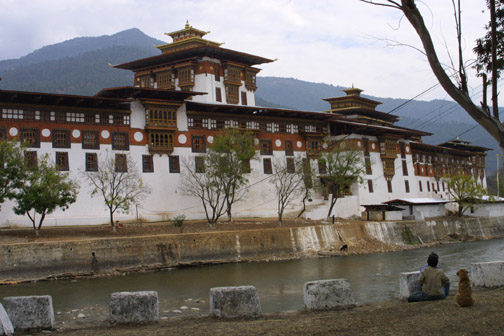
We drove through town to where two mountain rivers converged
together at a point.
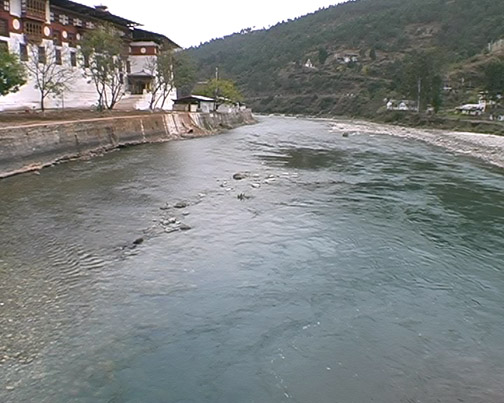
One river was said to be 'female' and the other 'male'. The
Monastery is built between them.
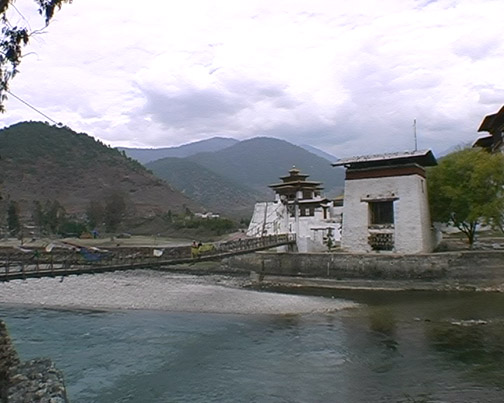
This is the female river.
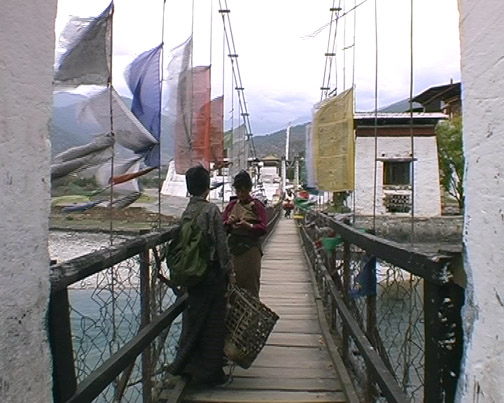
The swinging bridge was made of wood and cables. It was covered
with wind flags.
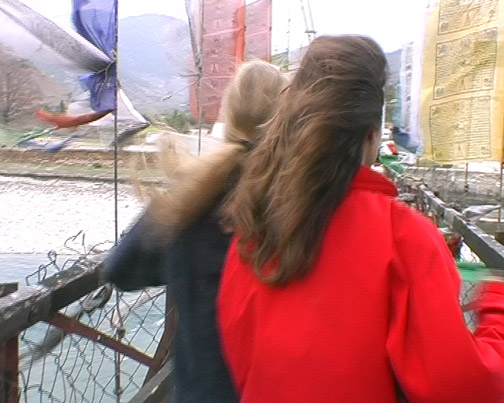
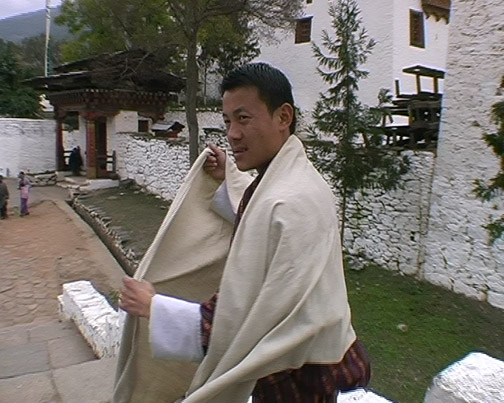
After we cross the bridge and before we go inside the monastery,
Tashi stops to put on his religous scarf. It is just like the
ones we saw in the Museum on the first day we arrived in Paro.
Different colors denote rank: white is for commoners, red and
saffron for Monks, and a sort of green for the King and highest
lamas.
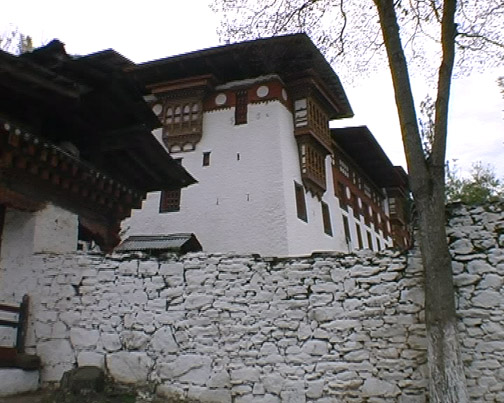
Monks live and study here. It is also a place locals come to
worship.
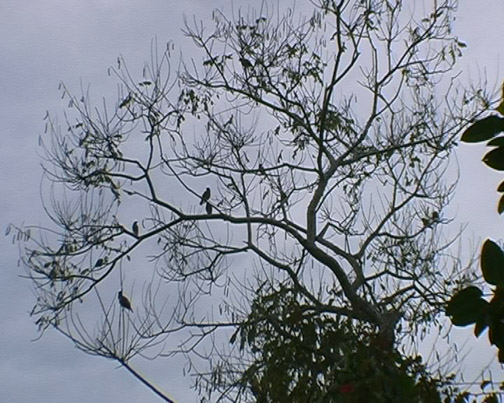
There are birds everywhere in the trees and the air is filled
with a joyous aviary-like cacophany.
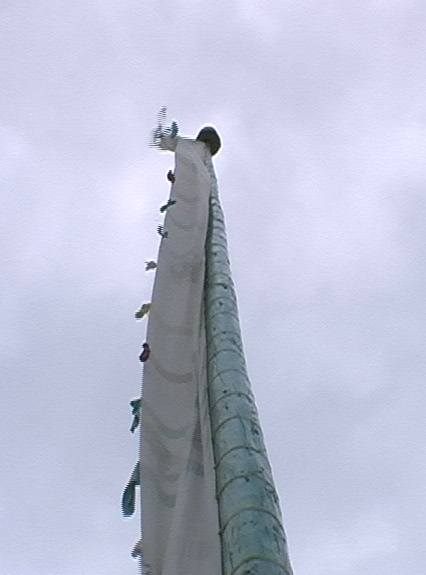
The biggest prayer flag I ever saw is here (photo does not do
it justice).
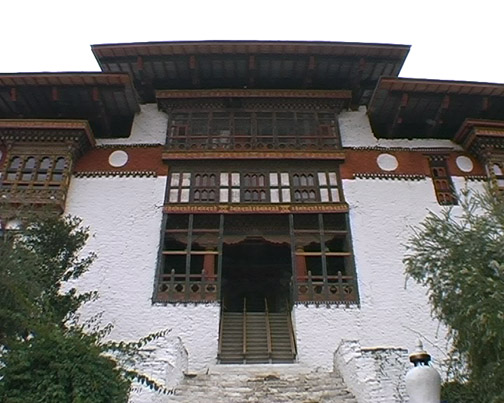
The steep stairs into the Monastery are idyllic.

They made me think of Brad Pitt and "Seven Years in Tibet."
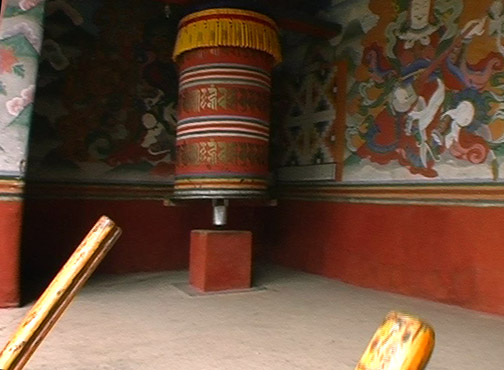
At the top of the stairs there is a prayer wheel.
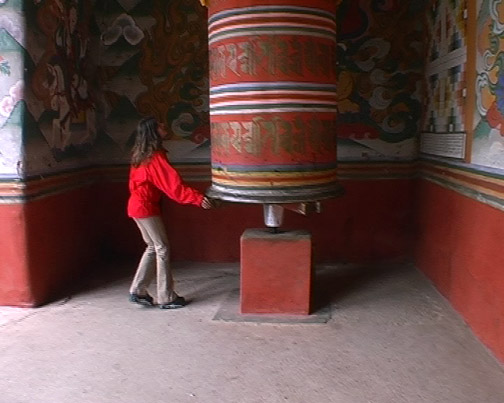
Are you suppose to make a wish before turning these? ;-)
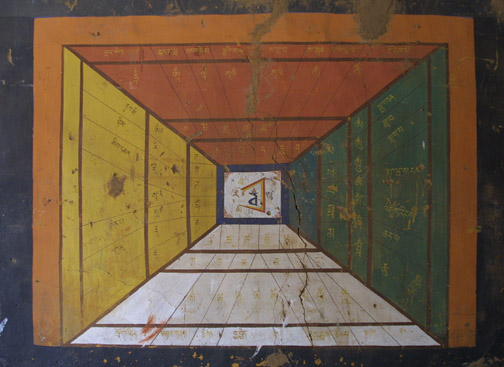
There are paintings on the walls that we don't understand.
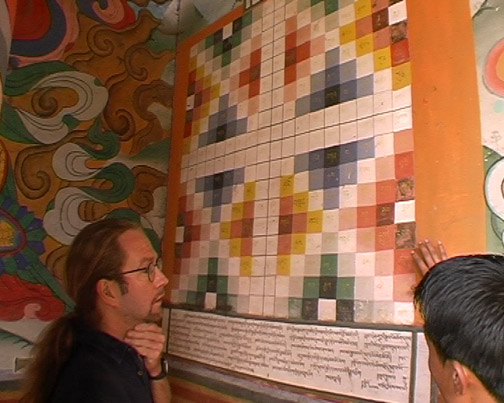
Tashi tries to explain that this one has to do with astrology
and auspicious days.
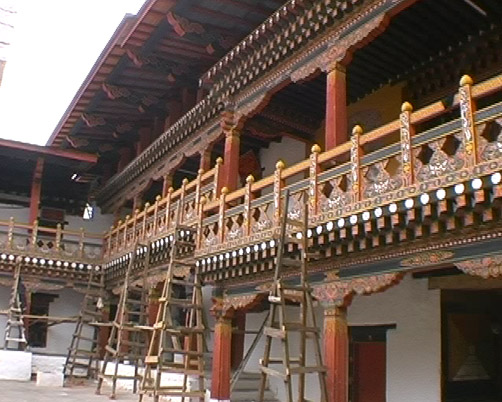
In the courtyard inside much of the woodwork has been redone
very recently. They are in the process of painting it.

And it is all done by hand.
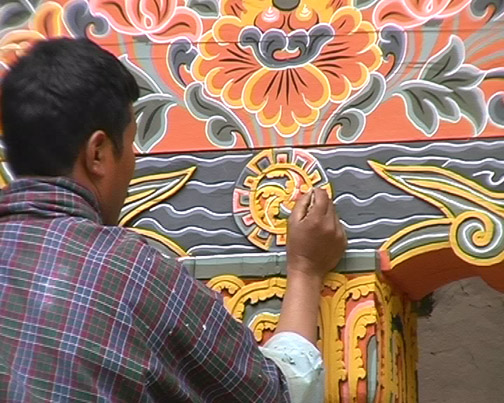
Not only are they painting it by hand, but they use sticks -
there is no 'brush' part. They only use different size - from
pointy to wide - sticks.
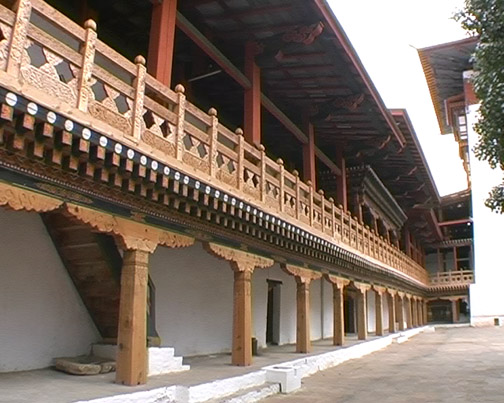
They have only about 1/3rd to go.
Further in the Monastery we come to the temples and prayer
rooms. And of course, no photos. In one of the roomsa group
of monks are performing a ceremony. We are told that a reincarnation
is leading it. We are allowed to go right up to the open door
and watch but not go in.
I can see inside the small room a Buddha alter with incense
and lit yak butter candles, about 20 young men in red monks
robes & shaved heads sit cross legged on the floor facing
away from us. A couple of them turn around and look back. They
start to chant and grunt in unison.
We go into the Temple across the courtyard. Inside it is huge.
We see no one. The only source of light appears to be throught
the big entrance door. The floor is wooden. Many pillars coverd
in ornately formed gold colored metal hold the high roof. In
diminishing light at the far end are 3 enormous carved Buddhas
facing the entrance.
The biggest is the Historical Buddha - always sitting on a
lotus - in the middle. His eyes seem to be looking down and
he seems to be looking at you because you are so small under
him. It works even better as you get closer. I notice bells
and drums and dorjis and stuff on the floor in front of him.
To his right is a Buddha famous for his architectural skills
and to his left is the Buddha famous for his engineering skills.
Their eyes seem to stare out over you, except the right eye
of the architect. They also have on stylized hats or crowns.
On the side walls are floor to ceiling cubicles, nooches, shelves
of Buddha statues.
Eric sits cross - legged on the floor by the drums and monk
implements. I meander around and end up in the back watcing
a young monk, maybe 19 or 20, who came in prepare ceremony plates
of rice, butter, and dried meat. We make eye contact briefly
and he smiles really big. I almost burst out laughing. I notice
his teeth are very white. He lifts a gold vessel with peacock
feathers, pours some liquid from it's slender snout into his
hand and drinks it. He turns to me, "Do you want some Holy
Water?" I hold out my hand. As he pours some into my hand
he tells me "It is for health and long life." It tastes
sweetened.
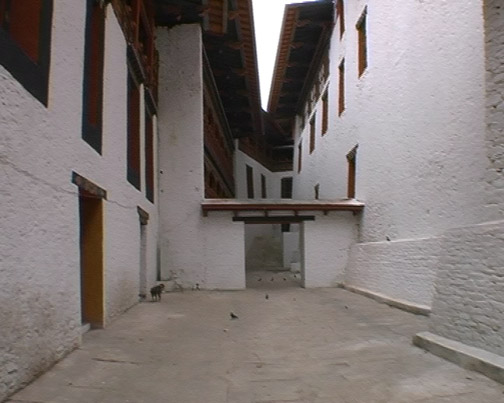
Tashi leads us clockwise through the rest of the monastery.
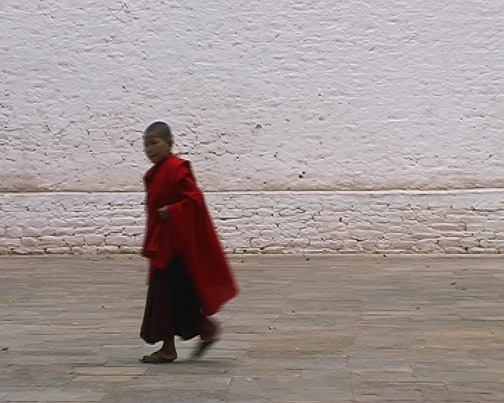
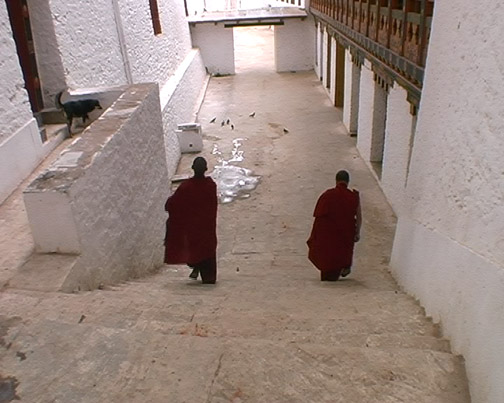
It feels a bit like medival times. Stone and Wood. Narrow passages.
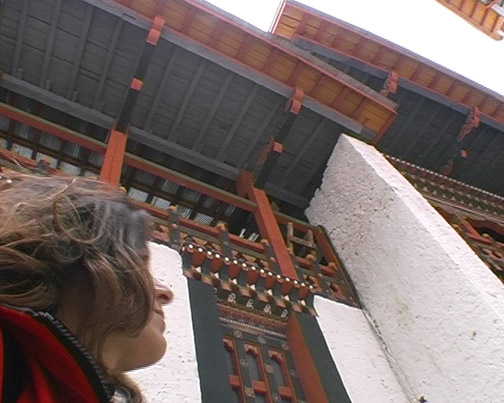
Looking up you see the traditional, bright, ornate Bhutanese
motifs.
|